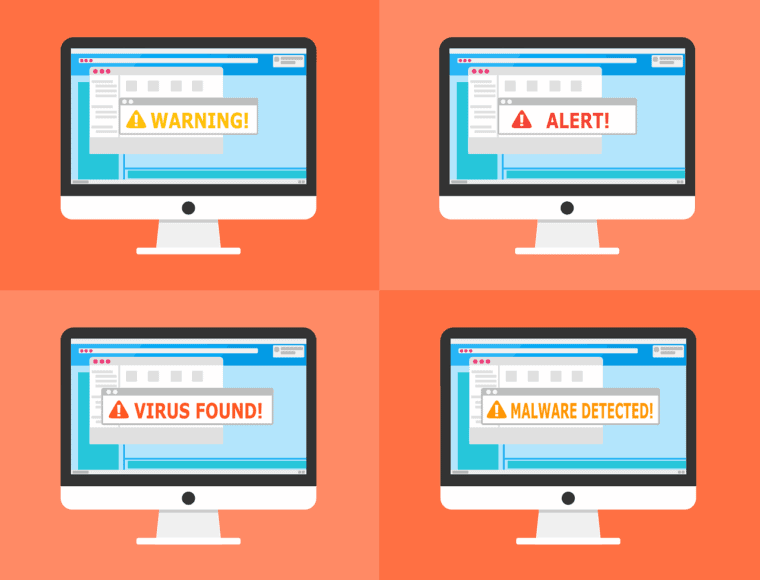8 Ways To Bring Privacy Back Into Your Online Life
Whilst it is not currently possible to protect yourself entirely from data breaches and cyber attacks, you can take some precautions to increase the safety and security of your accounts. If you would like to know how? Keep reading.

With the recent data breaches of Facebook, Whatsapp, and other social media applications, it is hard to believe our data is safe in the internet world.
For those of you who are unclear on the details, many reports suggest that the data of around 50 million Facebook users were left exposed due to a vulnerability in their security system. This breach also exposed Spotify and Instagram accounts, as users had logged into these applications using Facebook details. Despite this breach, many users remained loyal to the platform, not deleting their accounts.
As for WhatsApp, 1 billion users were advised to update their app as its developers reported a security flaw that allowed the software to be used to install spyware.
If two of the largest social media platforms are not entirely safe regarding data privacy, how can we expect the smaller ones to be?
While it is not currently possible to protect yourself entirely from data breaches and cyber attacks, you can take some precautions to increase the safety and security of your accounts.
If you would like to know how? Keep reading.
Get the Best Updates on SaaS, Tech, and AI
#1. Change your account to a private
If your account is private, people who want to access your profile to view your photos, personal information, and online content will have to send you a request. Only once you accept this request can they view your profile and contact you directly. If your account is public, anyone can view it and all the information that comes with it. Personal details, such as your address, telephone number, and email address, can be easily discovered from your social media accounts. Think about who you would want to have access to this information.
#2. Use strong passwords

This is the first line of defense against hackers. Don’t use passwords that are easy to guess, such as your name or birthday. Try to incorporate numbers, capital letters, and symbols. You must also ensure that your passwords are different for each account. While we don’t all have super memory, it is necessary to keep our accounts safe. If need be, you can use a password manager to store all your passwords. This way, you only need to remember the password manager’s password.
#3. Enable multi-factor authentication
This includes adding a security question, additional code, or another device to secure your account. If you choose to add another device, logging into your social media account will send a message to the device you have chosen to add to the system. This is usually in the form of a code. Then, you will be asked to input this code into the device you are trying to log in to complete the authentication. This makes your account considerably more secure, as hackers need access to two devices. If you choose the security question as additional protection, they would also need more information about you.
#4. Trust your gut

If it looks suspicious, it probably is. Malware can be sent through messages as an attachment. The messages tend to say things like ‘Have you seen what they are saying about you?’ or ‘is this photo of you?’ alongside a link. Fraudulent adverts tend to entice users to fill in their personal information by telling them they have won a large sum of money or a reward. Unfortunately, it is unlikely that you have won a free iPad. Nobody wins something for nothing. Learn to recognize the signs of a fraudulent message or advert on social media.
#5. Close accounts that you don’t use
If there is an old email, a video streaming, or a social media account you don’t use, delete them. Hackers can still target these accounts. This may allow them to access your more prominent, more frequently used accounts if they manage. Reduce the target, reduce the risk.
#6. Think about what you share online
When you post something online, it can’t be removed. You might think you can delete it, but in reality, anything you post online can be retrieved. Be responsible with what you share. Remember that your employers, family members, and enemies can see your content. If you don’t want them to see something, don’t post it.
#7. Get a VPN

Yes, free wifi at a cafe is great, but connecting to the network without knowing anything about its security is highly risky. A VPN is a virtual private network that encrypts data and creates a secure connection to the internet. This way, you can be reassured that your device and data are safe and not targeted.
#8. Clear your search history

Your search history contains cookies and previous websites that you have visited, which can be used to serve you targeted ads and can even point to your data. Clear your search history once in a while to erase all of this information and prevent it from being stored. This way, you can also forget about the curiosities in your 3 am thoughts, such as whether pigeons have eyelashes.
There are several things we can do to keep our accounts safe. While these precautions can be a pain, keeping your account and personal information secure on the internet and social media is worth it.
Around two-thirds of Americans have experienced a data breach of some kind.
Don’t let yourself be one of them.
FTC Disclosure: The pages you visit may have external affiliate links that may result in me getting a commission if you decide to buy the mentioned product. It gives a little encouragement to a smaller content creator like myself.


